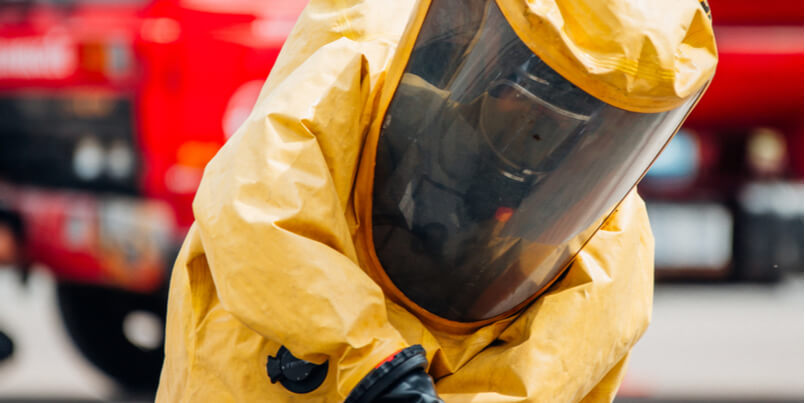 The threat to public safety from the release of chemical, biological, radiological, nuclear or explosive (CBRNe) materials is constantly evolving.
The threat to public safety from the release of chemical, biological, radiological, nuclear or explosive (CBRNe) materials is constantly evolving.
The effectiveness of response to any major CBRNe incident relies on cooperation between numerous government departments, agencies and public services - each of whom will be tasked with their own specific areas of responsibility in identifying the source and scope of the contamination and securing the area.
The use of state-of-the-art simulator detector equipment can play an invaluable role in preparing emergency teams for a diverse array of chemical threat scenarios, whilst at the same time ensuring there is no risk of harm to personnel, their equipment or the environment.
In this blog post we explore six key features to look for in a wide-area CBRNe training system which will ensure trainees gain the most value from their training exercises.
1. Real-time plume variation
In the event of a chemical release, there are two critical questions that will need to be answered as quickly as possible: How far has the plume extended? And in which direction is it heading?
The speed and range at which different chemicals will move through the air depends both on the density of the agent and how it combines with the atmosphere - or what is commonly referred to as 'buoyant turbulence'.
The heating of the ground surface, for example, can lead to significant differences in in how chemical particles will travel at different times of day or night. Or how they will react in response to specific weather conditions, temperatures or wind speeds.
Understanding how chemicals propagate under different conditions is vital for first responders in deploying personnel appropriately and determining accurate evacuation orders.
The higher the accuracy of the data the better the prediction - so it is important to ensure that any simulator training device provides an authentic replication of chemical plumes, deposition and hot spots.
2. GIS mapping support
Geographic information system (GIS) mapping technology is a key tool for problem solving and decision making by enabling crucial geographical or spatial data to be captured, stored, manipulated, analysed and managed.
This geospatial information can be used for a variety of purposes - to pinpoint the location of chemicals and their relationship to other features in the environment, to determine the density of a specific agent within a given area, to anticipate future conditions and to decide on a course of action.
3. Tabletop mode
Thorough classroom-based preparation can be hugely beneficial in ensuring trainees understand the scope and complexity of the exercise they will be undertaking before they take their equipment out into the field.
By utilising the option of a virtual or tabletop mode, instructors can provide a higher level of pre-exercise familiarisation.
All student 'movement' can then also be analysed before the participants embark on the practical, hands-on element of the exercise.
4. After Action Review (AAR)
A post-exercise critique or After Action Review (AAR) can aid instructors in scrutinising trainee activity, identifying any strengths and weaknesses and determining areas for improvement.
The integration of AAR capability allows individual trainee movement, and instrument usage, to be recorded in real time and played back at the conclusion of the training.
Armed with this information, trainers can then work with participants to correct any misunderstandings and explore other tactics.
5. Flexibility for the instructor
While the technology behind a wide-area training system is highly sophisticated, it is important that the system itself is simple to set-up, that it is readily portable and that exercises can be easily prepared on a laptop or PC without the need for complex system hardware.
There should be the option to quickly and easily create scenarios based on single or multiple Chemical Warfare Agent (CWA), radiological or HazMat releases - and for instructors to be able to define specific environmental conditions.
Ideally too, the system should also be able to support the widest possible range of additional simulator detector equipment - be it the LCD3.3-SIM, CAMSIM, AP2C-SIM, AP4C-SIM, RDS200-SIM, EPD-Mk2-SIM, AN/PDR-77-/VDR-2 / RDS100-SIM or similar.
6. Flexible procurement options
An organisation's CBRNe training requirements are likely to be constantly evolving.
Some instructors may prefer to purchase specific items of equipment as and when they are required. Others may want the option to be able to expand on or extend their system as training needs (and budgets) change.
For those who are especially keen to minimise their initial investment, it may also be preferable to opt for a subscription-based, pay-as-you-go scheme.
A wide-area instrumented training system can play an invaluable role in the creation of realistic, hands-on CBRNe scenarios that will enhance emergency preparedness.
For further information on the range of simulator detector options available you can download the free guide to procurement below.




